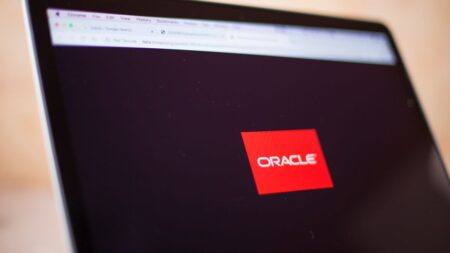
In this executive interview, filmed on location at Oracle CloudWorld 2023, I’m joined by Jeff Wittich, chief product officer, Ampere. We discuss Ampere and Oracle’s partnership, focusing on the importance of building a sustainable, scalable cloud infrastructure.
Highlights
00:55 — Ampere has been partnering with Oracle for a number of years. For Oracle, this comes down to being able to build a sustainable, scalable cloud. This matters because it needs to continue to expand compute capacity.
02:20 — Ampere is not saying to curtail the usage of compute and reduce the amount of work being done in the cloud. It understands Oracle needs to be able to increase the amount of compute in the cloud, but keep power at the same or even lower levels than it has been. That involves a technology change.
04:17 — Increasingly, the edge is a more distributed cloud. You’re collecting data and processing that data at the edge to reduce latency and the amount of data being transferred around. What Ampere is building spans the big central cloud, all the way out to the distributed edge. The power efficiency allows it to deliver amazing performance.
05:03 — One of the key use cases of the distributed cloud at the edge is around computer vision. You have cameras that are collecting lots and lots of data and, traditionally, you would have taken the feed or data from that camera and sent it back somewhere else, maybe even hundreds of miles away. That’s not real time. Now, out on the edge, that is happening in real time.
06:32 — The way Ampere is creating lasting value and real differentiation in the market comes back to the fact that it built something that was ground up for the cloud. It built its own cores and CPU, putting it in a position to do really unique things. It’d be difficult for a legacy player to do the same type of thing that it’s doing. Some are trying.
07:38 — I recall the innovator’s dilemma, and how hard it is to maintain an edge. Jeff says while there are advantages to being the incumbent, there are also big disadvantages. It’s hard to disrupt yourself.
08:24— Jeff discusses the company, 8×8. Oracle and Ampere met with 8×8 and talked about moving 8×8 video services onto Ampere. 8×8 cared a lot about the power footprint, the sustainability angle. It moved the 8×8 video services over and is seeing great results. This took five weeks — not five months, five years.
09:52 — Steve Miranda from the Oracle applications team talked about how the pace of change is only accelerating now. How do businesses give themselves the best opportunity to be prepared for changes coming up? That’s a place where Ampere fits in perfectly with a partner like Oracle, while also being able to do that tricky dual benefit: more performance, lower power consumption.
10:23 — If a business is looking for that next step, to ensure that for the next couple of years, it has the right amount of compute, that it’s able to fit into a sustainable footprint, Jeff advises that it doesn’t wait until it’s too late. Move now. Ampere and Oracle are there to help along the way.
11:21 — Oracle is not just using Ampere Altra processors, it’s also using AmpereOne processors. All the internal services at Oracle are running on top of Ampere
12:35 — The future is limitless. When Jeff looks at the partnership with Oracle, it will only continue to grow. He expects more and more customer adoption on OCI. He thinks there will be lot of other fun announcements over the next couple of years about products.







